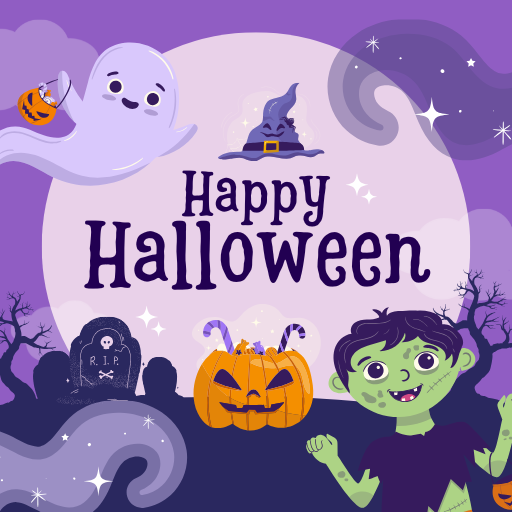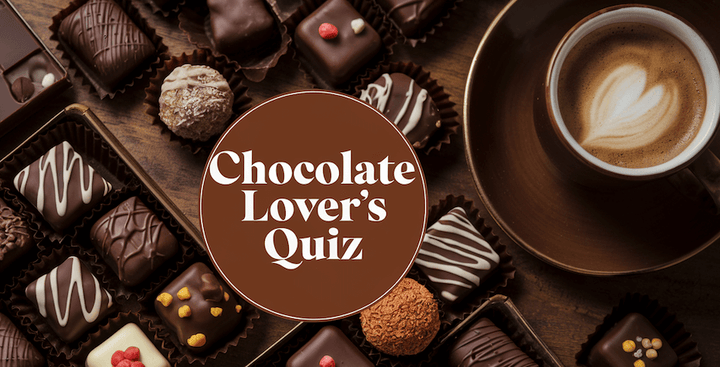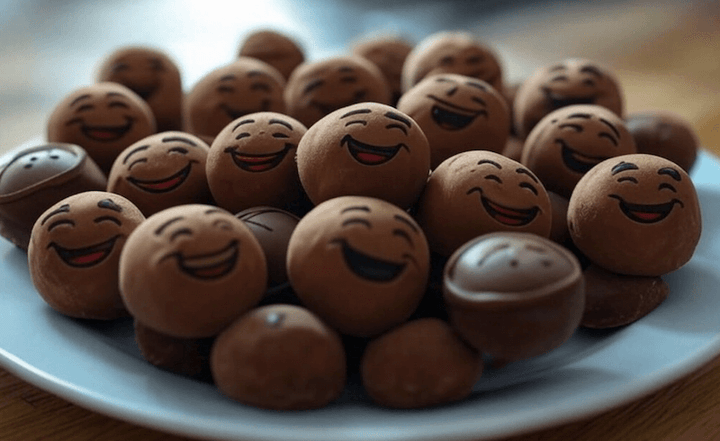In the canon of beloved children's literature, Roald Dahl's "Charlie and the Chocolate Factory" holds a position of sweet renown.
Published in 1964, this fantastical tale transports readers to a world of unrestrained imagination, where whimsicality and morality are interwoven with a golden thread of storytelling brilliance.
It unfolds the adventures of young Charlie Bucket, the economically disadvantaged boy with a heart of gold, who, against all odds, wins a golden ticket to visit the enigmatic Willy Wonka’s magical chocolate factory.
The story’s delicious concoction of humour, fantasy, and timeless lessons has ensnared the hearts of both young and old, making it a staple in the realm of classic children’s literature.
This post will unwrap the fascinating facts surrounding "Charlie and the Chocolate Factory," delving into its creation, adaptations, and the myriad nuggets of intriguing trivia that have sprouted around this enduring masterpiece.
So, let’s step into the great glass elevator and embark on a journey through the wondrous world of Wonka!
Related Post: Films About Chocolate
Fun Facts About Charlie And The Chocolate Factory
Let's dive into a treasure trove of fascinating facts about "Charlie and the Chocolate Factory," encompassing the revered book and its illustrious film adaptations.
Book Facts:
-
Authorship: The book, penned by the legendary Roald Dahl, was published in 1964.
-
Inspiration: Dahl was inspired by his childhood experiences of tasting chocolates from different companies sent to his school for testing.
-
Original Title: The working title was “Charlie’s Chocolate Boy.”
-
Sequel: A sequel, "Charlie and the Great Glass Elevator," was published in 1972.
-
Illustrations: The original illustrations were created by Joseph Schindelman in the US and by Faith Jaques in the UK.
-
Lost Chapter: There is a lost chapter titled “The Vanilla Fudge Room,” which didn’t make it to the final publication.
-
Different Versions: The book has undergone various edits, most notably changing the Oompa-Loompas’ description from African pygmies to being from Loompaland.
Movie Facts:
-
First Adaptation: The first film adaptation was "Willy Wonka & the Chocolate Factory," released in 1971, starring Gene Wilder as Willy Wonka.
-
Roald Dahl’s Opinion: Dahl disapproved of the 1971 adaptation, feeling it focused more on Wonka than Charlie.
-
2005 Adaptation: Tim Burton directed a new adaptation in 2005, with Johnny Depp portraying Willy Wonka.
-
Depp’s Inspiration: Johnny Depp based his portrayal partly on Anna Wintour, the editor of Vogue.
-
Musical Numbers: Both film adaptations are noted for their memorable musical numbers.
-
Dahl’s Screenplay: Roald Dahl wrote the original screenplay for the 1971 film but was replaced by David Seltzer.
-
Academy Award Nominations: The 2005 adaptation received an Academy Award nomination for Best Costume Design.
Additional Facts:
-
Sales Figures: The book has sold over 20 million copies worldwide.
-
Translations: It has been translated into 55 languages.
-
Musical Adaptation: The story has been adapted into a successful stage musical.
-
Video Game: A video game based on the 2005 film adaptation was released.
- Theme Park Ride: There is a ride inspired by the book at Alton Towers in the UK.
-
Golden Tickets: The idea of 'Golden Tickets' has been used by various companies for promotional purposes.
-
Cultural Impact: The story has deeply influenced pop culture and has been referenced in various forms of media.
-
Educational Use: The book is used in educational settings to teach children about morality and ethics.
-
Character Archetypes: The characters represent various archetypes and are used to impart moral lessons.
-
Imagery Usage: The imagery of the book is used in discussions about consumerism and ethical food production.
-
Anniversary Editions: Several special editions have been released to celebrate the anniversaries of the book’s publication.
These facts offer a panoramic view of "Charlie and the Chocolate Factory," illustrating its multi-dimensional existence as a book, film, and an enduring cultural phenomenon.

Related Post: What is Praline Chocolate?
Who Was Roald Dahl?
Roald Dahl was a British novelist, short-story writer, poet, and screenwriter renowned for his enthralling tales of children’s and adult fiction.
Born on 13th September 1916, in Llandaff, Wales, to Norwegian parents, Dahl's writing journey began in earnest after a tumultuous and eclectic career, including being a fighter pilot in the Royal Air Force during World War II.
Prolific Children’s Author:
Dahl’s prowess in concocting fantastical worlds and intriguing characters made him one of the most iconic children's authors of the 20th century.
His notable works include "Charlie and the Chocolate Factory," "Matilda," "The BFG," and "James and the Giant Peach," each of which has enamoured generations with its unique blend of whimsy, wit, and moral lessons.
Eclectic Adult Works:
Beyond his illustrious children's books, Dahl also penned a collection of works for adults, demonstrating his versatility in exploring darker, macabre themes.
His adult short stories, such as those in "Tales of the Unexpected," are characterised by their unexpected endings and often delve into human nature's sinister and surreal aspects.
Screenwriter and Inventor:
Dahl also dabbled in screenwriting, contributing to the scripts of iconic films like "You Only Live Twice" and "Chitty Chitty Bang Bang."
His inventive spirit extended beyond the realm of literature, as he co-developed the "Wade-Dahl-Till" valve, a medical device designed to alleviate certain conditions related to hydrocephalus.
Legacy:
Dahl’s literary prowess has earned him a plethora of awards, including the World Fantasy Award for Life Achievement in 1983.
His legacy is commemorated annually on 13th September, known as Roald Dahl Day, celebrating his remarkable contribution to literature.
He passed away on 23rd November 1990, but his enchanting tales continue to captivate readers worldwide, affirming his timeless appeal.
In essence, Roald Dahl was not just an author; he was a wizard of words whose prolific and eclectic body of work has shaped the literary landscape, bestowing upon readers a treasure trove of timeless stories that span the gamut from the magical to the macabre.
What is Charlie and the Great Glass Elevator?
"Charlie and the Great Glass Elevator" is the marvellous sequel to the much-loved "Charlie and the Chocolate Factory," both penned by the iconic British author Roald Dahl.
Published in 1972, this captivating tale continues the adventures of young Charlie Bucket, his family, and the eccentric chocolatier, Willy Wonka, as they soar through the skies in the miraculous glass elevator, initially introduced at the end of the first book.
In this enchanting continuation, readers are whisked away on a journey that blends Dahl's signature whimsy with a dash of science fiction.
The narrative explores themes of space travel as Charlie, Wonka, and the company inadvertently venture into outer space, encountering a host of new characters and peculiar creatures, including the vermicious Knids, a species of amorphous alien predators.
Moreover, the book delves into the comedic and chaotic attempts to rescue Charlie's grandparents from a precarious predicament involving the effects of Wonka-Vite and Vita-Wonk, two of Wonka’s inventions that impact the ageing process.
These elements, imbued with Dahl's imaginative flair and characteristic humour, serve to convey subtle moral and ethical lessons to the readers.
While "Charlie and the Great Glass Elevator" might not have achieved the iconic status of its predecessor, it nonetheless remains a testament to Roald Dahl's storytelling prowess, offering readers a delightful extension of Charlie and Wonka’s adventures, layered with wit, wonder, and timeless appeal.
What is the Plot of Charlie And The Chocolate Factory?
"Charlie and the Chocolate Factory," a masterful creation by Roald Dahl, narrates the whimsical journey of Charlie Bucket, a kind-hearted boy living in poverty, who triumphs over adversity to experience the wonders of Willy Wonka’s magical chocolate factory.
The story, set in a city where the Wonka factory is a mysterious presence, unfolds with the announcement of a global contest by the enigmatic chocolatier Willy Wonka.
Five Golden Tickets are hidden in his chocolate bars, granting the finders access to his secretive and marvellous factory.
Plot Summary:
-
Golden Ticket Hunt: The world is immersed in a frenzied hunt for the elusive Golden Tickets. Despite his circumstances, Charlie harbours a flicker of hope to discover one. Miraculously, he finds the last Golden Ticket and is accompanied by his Grandpa Joe to the factory.
-
The Factory Tour: Inside the factory, Charlie and the other winners—Augustus Gloop, Veruca Salt, Violet Beauregarde, and Mike Teavee—encounter a world brimming with fantastical inventions and magical creatures, including the small, singing Oompa-Loompas. Each room presents a new spectacle more marvellous than the last, from rivers of chocolate to everlasting gobstoppers.
-
Downfall of the Other Winners: The children, except Charlie, face comical and morally apt downfalls triggered by their own flaws. Augustus succumbs to his gluttony, Veruca to her greed, Violet to her competitiveness, and Mike to his obsession with television, leaving Charlie as the last child standing.
-
Charlie’s Triumph: Willy Wonka reveals that the entire tour was a test to find an heir to his chocolate empire. Charlie's inherent goodness and humility make him the ideal choice. The story concludes with Charlie and his family moving into the factory, where they will live happily, enveloped in the magic of Wonka’s world.
"Charlie and the Chocolate Factory" interweaves enchantment with poignant life lessons, rendering it a timeless tale that resonates with readers, inviting them to traverse a world where morality and imagination coalesce in a symphony of wonder and wisdom.
Who Were the Characters in Charlie And The Chocolate Factory?
"Charlie and the Chocolate Factory" by Roald Dahl features a colourful ensemble of characters, each bringing their unique flavours to this enchanting narrative:
1. Charlie Bucket:
The protagonist of the story, Charlie, is a kind, selfless, and optimistic boy living in poverty with his parents and four bedridden grandparents.
2. Grandpa Joe:
Charlie's loving and supportive grandfather accompanies him to the chocolate factory.
3. Willy Wonka:
The eccentric and ingenious owner of the chocolate factory, Mr. Wonka, is a man of mystery and marvel, revealing a world of wonders to the children.
4. Augustus Gloop:
A boy with an insatiable appetite, Augustus is the finder of the first Golden Ticket and meets his downfall in the Chocolate Room.
5. Veruca Salt:
The second Golden Ticket finder, Veruca, is a spoiled and demanding girl who faces consequences in the Nut Room.
6. Violet Beauregarde:
Competitive and gum-obsessed, Violet, the third ticket finder, faces her predicament in the Inventing Room after ignoring Wonka’s warnings.
7. Mike Teavee:
Obsessed with television and the fourth ticket finder, Mike experiences trouble in the Television Room due to disobedience.
8. Oompa-Loompas:
The small, entertaining workers in Wonka’s factory are responsible for running the factory and performing musical numbers to comment on the fallen children’s vices.
9. Mr. and Mrs. Bucket:
Charlie’s caring and struggling parents try their best to provide for the family despite their impoverished conditions.
10. The Other Grandparents:
Grandpa George, Grandma Georgina, and Grandma Josephine, bedridden like Grandpa Joe, share the little they have with Charlie and support him unconditionally.
11. The Various Parents:
The other children’s parents accompany them in the factory, displaying characteristics often reflective of their children’s flaws.
Each character, with their distinctive traits, contributes to the rich tapestry of "Charlie and the Chocolate Factory," illustrating Roald Dahl’s knack for creating memorable characters that captivate readers and impart significant moral lessons.
Some Notes From an Expert Chocolatier
At Whitakers Chocolates, we often find ourselves immersed in a whimsical world reminiscent of Roald Dahl’s enchanting narrative, "Charlie and the Chocolate Factory."
It’s a delightful association that fills our everyday routine with a sweet blend of nostalgia and magic.
After all, our very own Managing Director, William Whitaker, is fondly regarded as our Willy Wonka, guiding us through the mesmerising dance of cocoa and sugar.
Many of us, whether children or adults have marvelled at the fanciful world of Willy Wonka, with his endless concoctions of chocolate marvels and sweets that dance between imagination and reality.
The sense of wonder and enchantment that resonates through the tale aligns seamlessly with the ethos at Whitakers Chocolates.
We embrace the fanciful, constantly striving to blur the lines between the culinary arts and confectionery imagination.
Final Notes On Charlie And The Chocolate Factory Facts
"Charlie and the Chocolate Factory" by Roald Dahl is not just a whimsical tale of candy and wonder; it’s a testament to the boundless limits of imagination and the magical interweave of reality and fantasy.
This enchanting story has danced through the pages of time, sowing seeds of wonder and delight in both young and old hearts.
It is a narrative that has transcended its medium, emerging as a universal symbol for dreamers and chocolate lovers alike.
The plethora of interesting facts associated with this timeless piece offers us intriguing glimpses into the creative processes and inspirations behind Dahl’s work.
It’s fascinating to delve into this delightful tale's intricate layers, unravelling its characters' richness, origins, and enduring impact on popular culture.
The intertwining of fantastical elements with profound human experiences lends this story a multi-dimensional appeal, ensuring its relevance and allure across generations.











